On This Day…May 26th.
Two A6M2 Type 0 Model 11 ‘Zero' fighters pictured in flight from Yichang, Hubei Province en route to attack targets in Nanzheng, in China, 26 May, 1941.
British Cruiser Mk IV tank at Huppy, France, 26-29 May 1940. Below is George William's Mk IV built for the very first iModeler Group Build (theme; D-Day) - @chinesegeorge - if you are out there, George, say hello.
Spitfire porn (redux).
Spitfire Mk.Ia N3200 sitting in the waves on the beach at Sangatte after being shot down on May 26th, 1940.
As with the Kittyhawk showcased the other day in ‘OTD...' here are some photos of the Spitfire N3200 as she was being restored and in her flying condition.
I love this photo, The Hornet at Pearl Harbor, seen from Ford Island Naval Air Station, Pearl Harbor, 26th May, 1942.
By the 26th May the obsession the British Navy held for sinking the Bismarck reached fever point, involving every available ship in the Fleet. The British based units were steaming from the North (where failed intelligence had put the German ship) and “Force H”, led by HMS Ark Royal, was making way from Gibraltar in the South. Every other ship in the vicinity (essentially the entire Atlantic Ocean) was summoned to close the ring when the Bismarck was spotted by a Fleet Catalina (actual aircraft, below) on the evening of the 26th.
After sustaining damage to her boilers and fuel tanks in the Battle of Denmark Strait inflicted by the HMS Hood, the Bismarck (although reduced in speed and range) managed to evade the British Navy in her run for the port of Brest in France.
There were five distinct phases involved in the sinking of the Bismarck and the first two three place on this day in ‘41. The first was the accidental spotting by the Catalina. This was followed late in the day by launches from the Ark Royal of Fairey Swordfish torpedo attacks (below, a Swordfish returns to Ark Royal after the second run).
In one of those all too frequent communication breakdowns by the Admiralty, no-one told the Swordfish pilots that the HMS Sheffield was teaching the Bismarck and the first waves fired their torpedos at friendly targets. It was only through the incredible good fortune that each of the first salvo of magnetic torpedoes failed that the Navy averted what would have been a catastrophe.
John Moffat was a pilot in the second wave, fitted with ‘contact detonator' torpedoes...
“In our briefing in the Ark we had discussed coordinating our attack, the first three flights coming in on the port beam from various bearings, with the second wave doing the same on the starboard side. This would help to confuse the anti- aircraft fire and would also make it difficult for Bismarck to manoeuvre into the torpedo tracks.”
“But it seemed that we had got badly separated in the high cloud; it was utter confusion. I felt that every gun on the ship was aiming at me. It was heading towards us, the lazily spinning tracer from scores of guns coming at us like hail. I do not know how I managed to keep flying into it: every instinct was screaming at me to duck, turn away, do anything – an impulse that it was hard to fight off. But I held on and we got closer and closer.”
“I went down, as low as I dared, though even that took an act of will to overcome my fear of hitting the rough sea. At training school I had been taught to assess the speed of the ship and lay off my aim by using a simple marked rod mounted horizontally along the top of the cockpit. But the nearer I got the larger the target became, so I decided to aim for the bow.”
“Then I heard Dusty Miller shouting in my ear, ‘Not yet, not yet!' and I thought, ‘Has he gone mad? What is he doing?' I turned and realized that he was leaning out of the cockpit, looking down at the sea, trying to prevent me from dropping the torpedo on to the crest of a wave, where it would bounce off or dive deep, either way knocked off any course that I might have fired it on.
We were getting closer and closer, the ship was getting bigger and bigger, and I thought, ‘Bloody hell, what are you waiting for?'
“Then he said, ‘Let her go, Jock,' and I pressed the button on the throttle. Dusty yelled, ‘I think we have got a runner.'
He had a runner, alright, and the impacts on the Bismarck caused her rudders to jam in a turning position, essentially disabling any evasive manoeuvres.
The third phase, as night drew in, was a continued harrying and harassment tactic all during the night into the 27th May by several British destroyers...
Luftwaffe squadron of Ju87 Stukas landing in France, May 26th, 1942.
The Battle of Gazala started on May 26th, ending on June 21st with the fall of Tobruk.
In total, the Allied forces lost 50,000 men to death, injury, and capture in this campaign. Rommel summed up in one sentence what a board of inquiry after the battle failed to find when he said to a captured British officer, “What difference does it make if you have two tanks to my one, when you spread them out and let me smash them in detail?”
BF 109E-3 of JG26 II. May, 1939 in Odendorf, Germany.
May 26th, 1942 saw the first flight of the Northrop XP-61 ‘Black Widow'. This was the first American aircraft specifically designed for night flight and the first aircraft designed from the wheels up to accommodate radar.
Aerial view looking southward over Iwo Jima's South Airfield with the iconic Mount Suribachi in the distance, 26th of May 1945.
B-17 IIa of 220 Squadron, Benbecula, Outer Hebrides islands of Scotland, May 26th, 1943. The crew are loading up with depth charges.
Below, same team, in a lovely colourised photo on the same date.



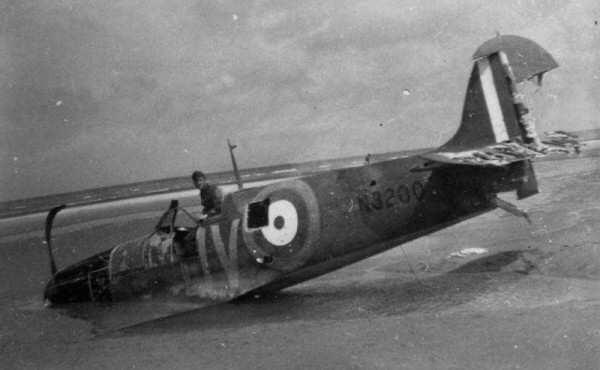




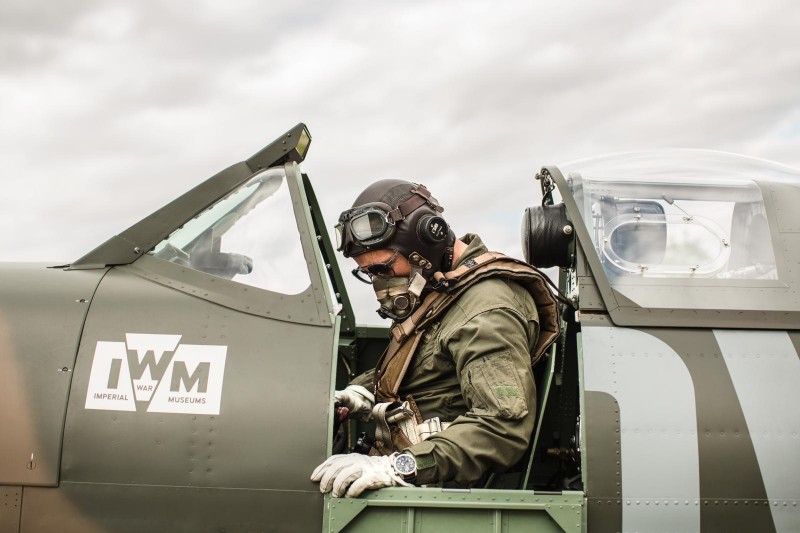











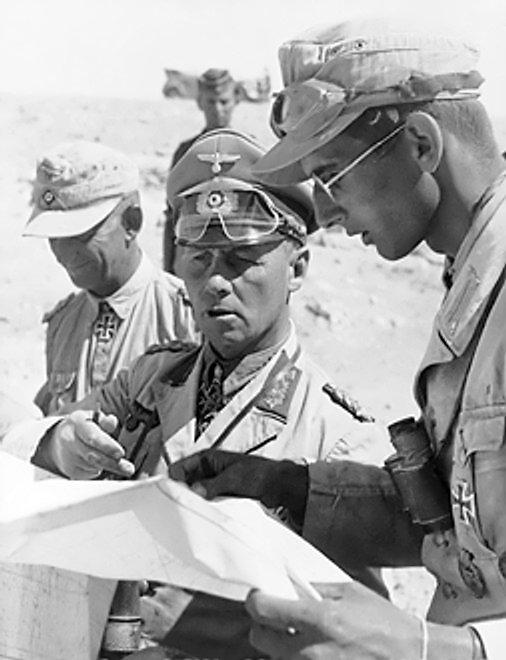






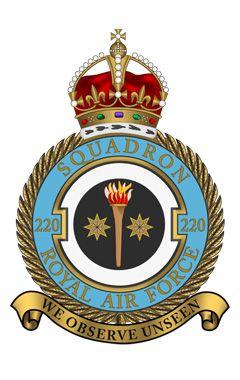



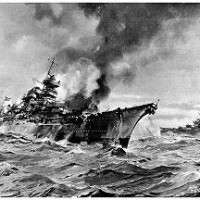





Slight editing issues this morning; all sorted now.
Spit porn is nice but what about Stringbag porn you had to have some brick b***s to fly those slow, cumbersome biplanes amidst the flak
you had to have some brick b***s to fly those slow, cumbersome biplanes amidst the flak
Also interesting is the coastal command fortress, always found that scheme particularly appealing in this plane
Absolutely fabulous post, David. Outstanding. Top three to be sure of all your OTD.
Anyone want to chime in on the ordinance under the wing of the WQZ Catalina that tracked the Bismarck? Are those bombs or depth charges? Anyone? I sort of doubt the plane would have carried them while tracking the Bismarck but all the same I'd like to know, as this is my next project up...
Thank you, david. The Cat’ was a member of 209 squadron mainly deployed as sub hunters, so my guess is that the ordinance is depth charges. I would think the Catalina would be under orders to observe and report and not engage unless necessary.
Hello David, @davidathomas
I would say these were depth charges too. Possibly an AN / Mk-41 type as shown in this photo.
The chief American air-deliverable depth charge when war broke out was the AN Mk 17, a 325 lb (147 kg) weapon with a charge of 234 lb (106 kg) of TNT. This had impact and hydrostatic fuses, the latter rather unreliable. It tended to ricochet until a nose plate was added. A flat nose version was eventually introduced as the Mk 41.
oye jon't care owe you do it...you mossed... shink... the bismaaaack
iconic picture of james mason too
Classic.
you've got a mind like a steel trap sir...nothing gets by you